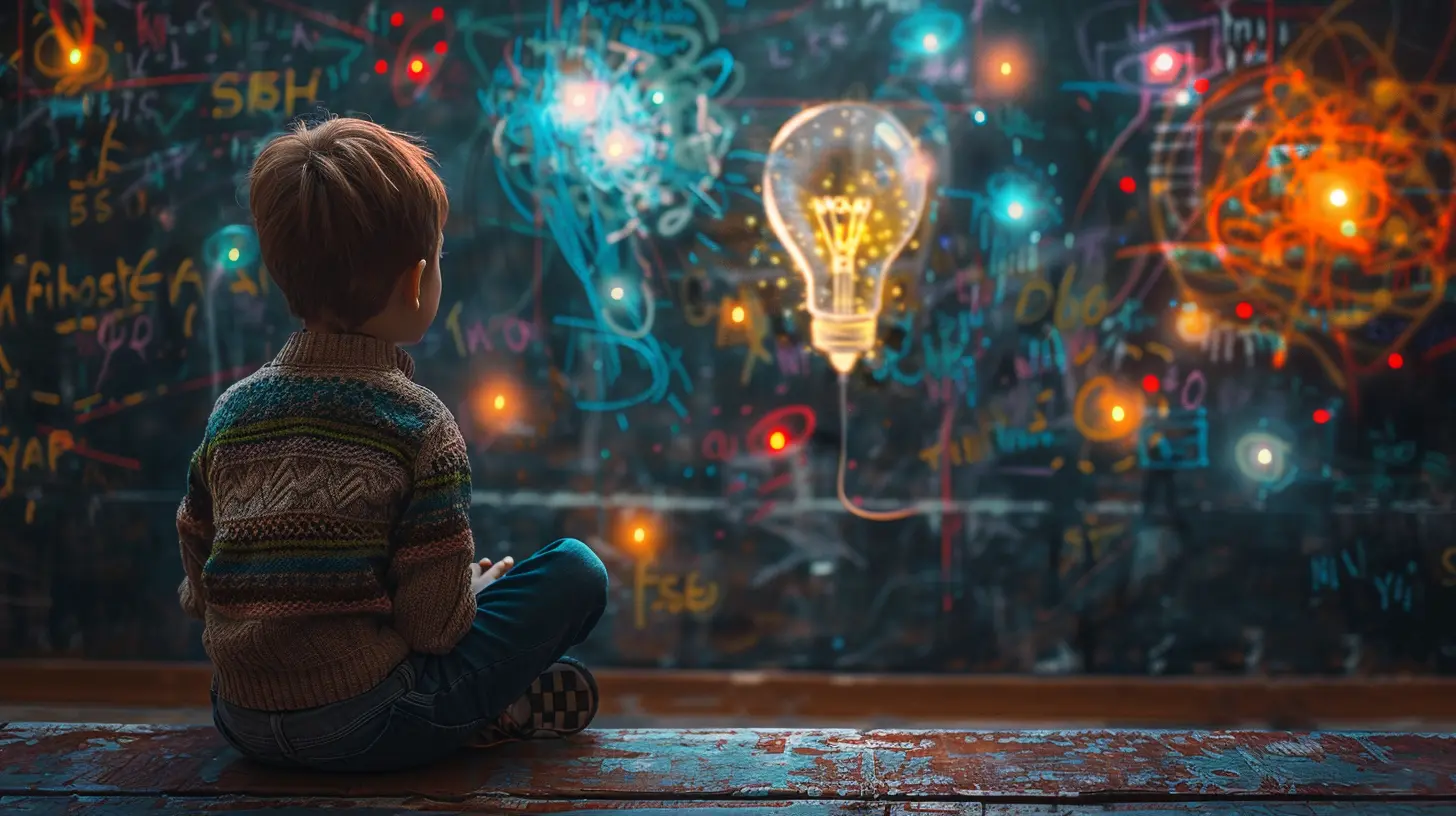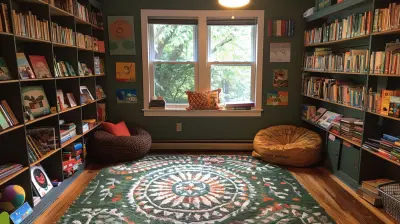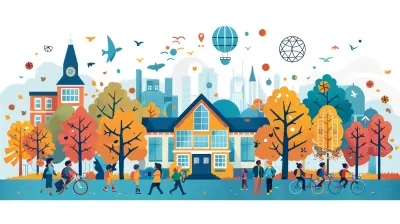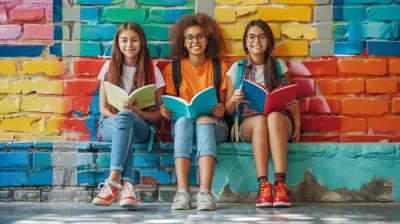How to Foster Curiosity and Creativity in the Classroom
28 August 2025
Ever tried teaching a room full of sleepy-eyed students while wishing you could just plug enthusiasm directly into their brains? Been there, done that. But here's the wild idea—what if instead of trying to force-feed facts, we stirred up a little curiosity and let creativity do the legwork?
Fostering curiosity and creativity in the classroom isn't just a fluffy, feel-good bonus. Nope—it’s essential. Why? Because curious, creative students are engaged learners. And let’s be honest, engaged learners don’t just memorize—they innovate, explore, question, and thrive.
So, buckle up as we dive into how to turn your classroom into a curiosity-fueled, creativity-powered hub of learning magic. 🚀
Why Curiosity and Creativity Matter in Education
Let’s start here: Why even bother?Curiosity is the spark. It’s the "Why is the sky blue?" and the "What happens if I..." that pushes kids to seek answers. Creativity is the engine that takes that question and turns it into a diorama, an experiment, a poem, or even a wacky skit about Newton’s Laws starring a banana.
Together, these two are the twin turbochargers of learning. They supercharge critical thinking, improve retention, and make learning incredibly fun (yes, fun still matters in classrooms!).
Plus, in a world where Google has all the answers, it’s not about what you know—it’s about what you do with what you know.
1. Create A Safe Space for Questions (Even the Weird Ones)
First things first—crush the fear of being wrong. Like, stomp it out with both feet.When kids are afraid of sounding silly or stupid, their curiosity fizzles out. So, if a student asks, “Could dinosaurs have been astronauts?”, don’t roll your eyes. Cheer that question on! Then use it as a launchpad.
🧠 Quick Tip: Set up a “Curiosity Corner” where any question—no matter how wild—can be posted anonymously. Review and discuss a few each week. It keeps the fun alive and the questions flowing.
2. Embrace the Mess: Creativity Isn’t Always Neat
Creativity is loud. It’s squiggly, chaotic, and sometimes sticky (especially during art projects).That’s okay.
Give students the freedom to create without worrying about “right” answers. Let them build, tinker, draw, dramatize, or even design their own mini-podcasts. Offer materials, ideas, and some guidelines—but also let them run wild within those boundaries.
🎨 Pro Tip: Introduce “Choice Time Fridays” where students choose how to demonstrate understanding of a topic—comic strips, rap songs, stop-motion videos? It’s all fair game.
3. Teach, Don’t Tell – Encourage Investigation
Teaching facts is easy, but sparking a discovery? Now that’s the secret sauce.Instead of handing out answers, throw out questions. Better yet, toss in clues and let students piece the puzzle together. Turn lessons into quests or mysteries.
🕵️♀️ Example:
Teaching about ancient civilizations? Leave artifacts around the room and let students "excavate" clues to build a theory about the culture. Indiana Jones meets 6th-grade social studies!
It’s about switching from “sage on the stage” to “guide on the side.” Trust me, being the Dumbledore to their Harry makes teaching way more magical.
4. Use "What If?" Scenarios to Fire Up the Imagination
There’s something irresistible about a good “What if…?”“What if gravity stopped working for a day?”
“What if Shakespeare had TikTok?”
These questions let students flex their creative muscles. Encourage them to write stories, create drawings, or invent gadgets in response to imaginative prompts. It gets them thinking outside the textbook.
🧪 Science teacher? Try: “What if the periodic table was edible?”
👨🏫 History buff? Try: “What if Napoleon had a smartphone?”
Let their brains roam free—and you’ll be amazed at where they go.
5. Get Real: Connect Learning to the Real World
You know what kills curiosity? Boredom. And nothing’s more boring than learning stuff without knowing why it matters.So, connect your content to the real world. Show students how math solves actual problems, how writing can change minds, and how science makes smoothies possible.
💡 Pro Move: Bring in guest speakers from real professions. Have a coder talk about how they turned video gaming into a job. Or a local artist explain how they make a living creating giant chalk murals.
Suddenly, your classroom is a gateway—not a trap.
6. Celebrate Questions More Than Answers
Repeat after me: “Asking is just as important as answering.”Make it a point to reward curiosity. Put up a “Question of the Week” board or hand out “Curious Thinker” badges. Normalize the phrase “I don’t know, but let’s find out.”
This flips the entire classroom energy. Instead of fearing ignorance, students start to embrace the process of learning.
📣 Try This: Once a week, assign a “Curiosity Journal” entry. Have students write about something they wondered, researched, or explored that week—school-related or not. Some of the best learning lurks outside the syllabus.
7. Remix Your Lessons to Include Play
Yes, even older kids need play. Especially older kids.Gamify your lessons with quizzes, scavenger hunts, or escape room-style challenges. Use role-play to re-enact historical events or simulate scientific discoveries. Build a cardboard box time machine. Why not?
🔮 Learning doesn’t have to feel like homework. It can feel like Hogwarts.
And when it does, students are more likely to remember—and care about—what they learn.
8. Let Students Drive (at Least Some of the Time)
Want to know what makes students sit up straighter in their chairs? Giving them some control.Let them pitch project ideas or vote on what topic to explore next. Have them design their own experiments or draft rubrics for grading creative assignments.
👑 Student agency = student ownership.
Once they feel like their voice matters, their engagement skyrockets. It’s like giving them keys to their own learning journey.
9. Model Curiosity and Creativity Yourself
You knew this part was coming.If you want curious, creative students, you’ve got to be a curious, creative teacher. Show enthusiasm for weird facts. Ask silly questions aloud. Doodle on the board. Try new tech tools (even if you break them). Laugh when you mess up a lesson.
Your attitude sets the tone. And when you're genuinely interested, they will be too.
📚 Nerd Alert: Bring in random "mystery objects" and challenge the class to guess what they are and what they’re used for. (I’ve used everything from Morse code keys to fossilized shark teeth—it’s always a hit.)
10. Make Time for Passion Projects
You’ve probably heard of Google's famous "20% time”—employees get 20% of their schedule to work on passion-driven ideas.Why not steal the idea?
Set aside even an hour a week for students to dive into something they care about. It could be coding a game, designing a magazine, inventing a sport, or learning how to solve a Rubik’s cube with their toes (hey, if it sparks joy...).
💥 Passion leads to persistence. And persistence leads to deep, meaningful learning.
11. Break the Routine (Occasionally)
Routines are great for structure but terrible for inspiration if they get too stale.Mix things up. Hold class outside. Have a “backwards day” where students teach. Bring in music or snacks tied to your topic. Invite a surprise guest.
The unpredictability keeps things... sparkly. ✨
Even one quirky twist can ignite curiosity in the most unexpected student.
12. Encourage Collaboration, Not Just Competition
Creativity grows in community. Let students brainstorm in groups, share their wildest ideas, and give feedback to peers.Bonus: It teaches empathy, active listening, and communication—all valuable skills no matter what path they take in life.
👫 Pair students for “Creative Sparks” time—a 10-minute brain dump where they bounce bizarre ideas off each other. No criticism allowed. Just pure, beautiful chaos.
Wrapping It All Up
Here’s the secret sauce to fostering curiosity and creativity: You don’t need a ton of fancy tech, Pinterest-perfect projects, or a wizard’s robe (though let’s be clear, a wizard’s robe never hurts).What you really need? A mindset shift.
Focus less on teaching content and more on creating an environment where wonder thrives. Where students are free to ask, try, fail, and try again. Where learning is less like checking boxes and more like opening treasure chests.
And hey, if you make a few glittery messes along the way? Even better.
Final Thought: Be the Curiosity You Want to See in the Classroom
Yep, I'm flipping Gandhi’s quote. Because when you model curiosity and creativity, your students follow suit. So go on—be quirky. Be random. Be curious. Be you.They’ll thank you for it. Eventually. (Probably after the glitter is gone.
all images in this post were generated using AI tools
Category:
Teaching StrategiesAuthor:

Eva Barker
Discussion
rate this article
1 comments
Gunnar McKinley
Fostering curiosity and creativity transforms the classroom into a vibrant space for exploration. Ignite young minds, and watch innovation flourish!
September 15, 2025 at 2:49 AM

Eva Barker
Thank you! Cultivating curiosity and creativity truly unlocks students' potential and creates an engaging learning environment.


